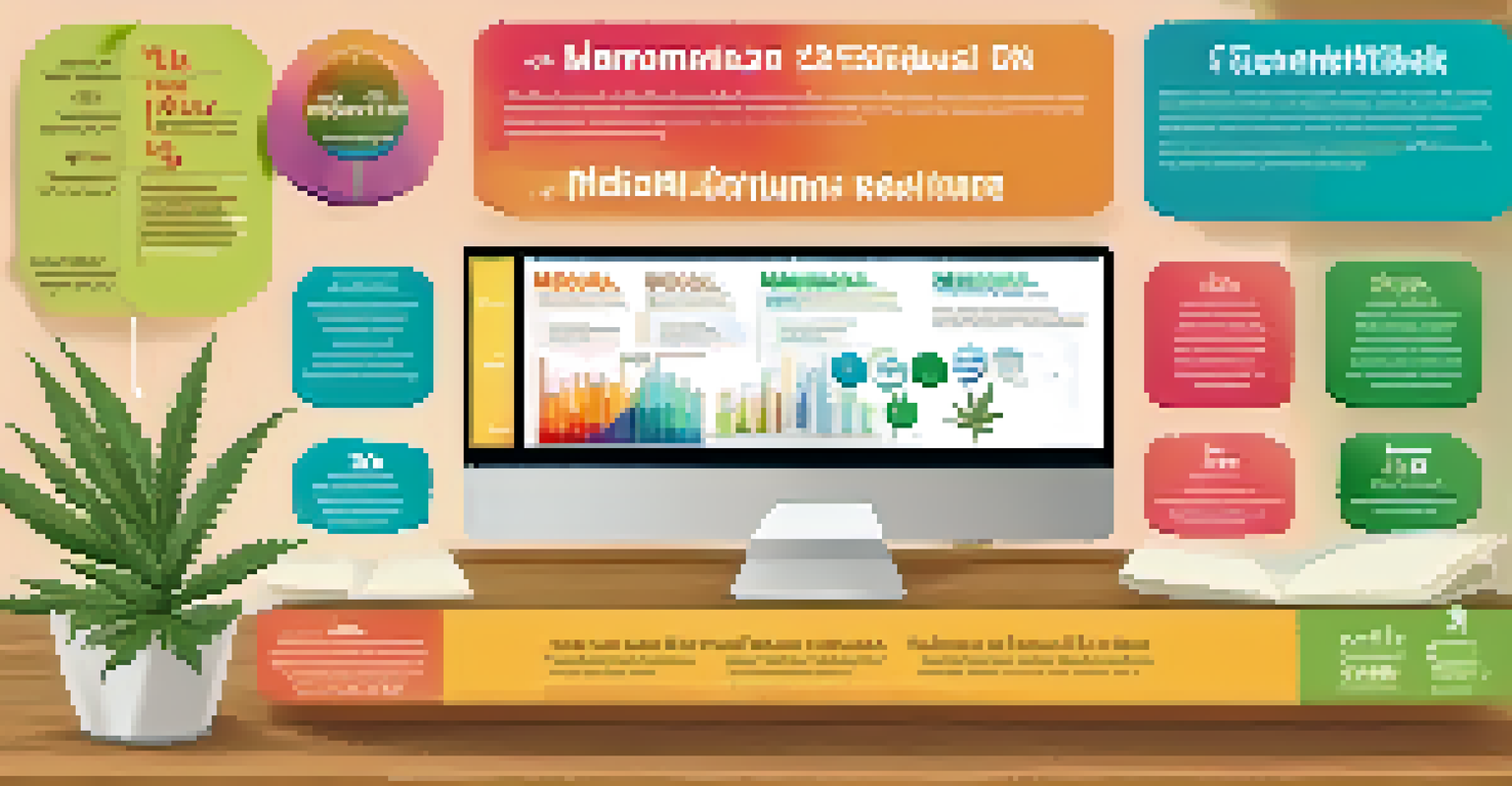Patient Education Disparities in Medical Marijuana Use

The Importance of Patient Education in Medical Marijuana
Patient education plays a crucial role in understanding medical marijuana. As more states legalize its use, patients need clear information to make informed decisions about their health. This is particularly important for those with chronic conditions, who may benefit significantly from cannabis but lack guidance.
Patient education is the cornerstone of effective healthcare, particularly when introducing complex treatments like medical marijuana.
Without proper education, patients might misuse cannabis or avoid it altogether, missing out on potential relief. The complexities of strains, dosages, and methods of consumption can be overwhelming. Therefore, effective education can empower patients to navigate these options confidently.
Moreover, education can help demystify medical marijuana, addressing common misconceptions. By providing accurate information, healthcare providers can foster an environment that encourages safe and effective use. This ultimately leads to better health outcomes and patient satisfaction.
Identifying Disparities in Access to Information
Despite the growing availability of medical marijuana, not all patients receive equal access to educational resources. Those in rural areas or low-income communities often face barriers, such as a lack of healthcare providers familiar with cannabis. This can leave patients feeling isolated and uninformed about their options.

Cultural factors also play a significant role in education disparities. In some communities, stigma surrounding marijuana use can prevent open discussions between patients and providers. This silence can create a gap in understanding, leaving many patients unaware of the potential benefits.
Patient Education is Essential
Clear education empowers patients to make informed decisions about medical marijuana, enhancing their ability to navigate treatment options.
Furthermore, language barriers can hinder access to accurate information. Patients who do not speak English fluently may struggle to find educational materials or resources. This highlights the need for inclusive education strategies that reach diverse populations effectively.
The Role of Healthcare Providers in Education
Healthcare providers are crucial in bridging the education gap surrounding medical marijuana. Their role involves not only prescribing cannabis but also ensuring patients understand its use and effects. Unfortunately, many providers may lack adequate training in this area, which can lead to uncertainty for both parties.
Empowering patients with knowledge not only enhances their understanding but also fosters trust in their healthcare providers.
When providers are well-informed about medical marijuana, they can offer tailored advice based on individual patient needs. This personalized approach can enhance trust and encourage open conversations about treatment options. As a result, patients are more likely to feel supported and empowered in their healthcare journey.
Additionally, providers can advocate for better resources and training within the healthcare system. By prioritizing cannabis education, they can help dismantle the stigma associated with marijuana use. This proactive stance can foster a more inclusive environment for all patients.
Community Initiatives to Improve Education
Community initiatives play a vital role in enhancing patient education on medical marijuana. Local organizations can offer workshops, seminars, and informational sessions that help demystify cannabis use. These initiatives often provide a safe space for patients to ask questions and share experiences.
Moreover, collaborating with healthcare professionals can amplify the impact of these initiatives. By bringing together experts and community members, these programs can address specific local needs and concerns. This tailored approach fosters a sense of belonging and empowerment among participants.
Disparities Limit Access to Info
Not all patients have equal access to educational resources, particularly those in rural or low-income communities, which hinders their understanding of medical marijuana.
Additionally, online platforms can further extend the reach of educational efforts. Social media and websites dedicated to cannabis education can connect patients with reliable information. This accessibility is essential for promoting informed decision-making, especially in underserved communities.
The Impact of Legislation on Education Access
Legislation surrounding medical marijuana significantly influences patient education access. In states with comprehensive regulations, educational resources are more likely to be available and promoted. Conversely, in regions where cannabis remains stigmatized, access to information can be limited.
Changes in laws can also affect healthcare providers' willingness to discuss medical marijuana. In permissive environments, providers may feel more comfortable addressing cannabis as a treatment option. However, restrictive laws can create fear and uncertainty, leading to inadequate patient education.
It's essential to advocate for policies that support education and research on medical marijuana. By fostering a legislative environment that values patient education, we can ensure that all individuals have the information they need to make informed choices about their health.
Barriers to Understanding Medical Marijuana's Benefits
Patients often encounter barriers when trying to understand the potential benefits of medical marijuana. Misinformation and a lack of clear, accessible resources can lead to confusion and skepticism. This is particularly problematic in a rapidly evolving field where new research is constantly emerging.
Additionally, the varying legal statuses of cannabis across states can complicate understanding. Patients may be unsure of what is legal or acceptable in their jurisdiction, creating hesitation in exploring their options. This uncertainty can prevent them from seeking out medical marijuana altogether.
Healthcare Providers Must Lead
Healthcare providers play a crucial role in educating patients about medical marijuana, yet many lack adequate training in this area.
To overcome these barriers, it's vital to create straightforward, science-based educational materials. Providing clear, concise information about the benefits and risks of medical marijuana can help patients make informed decisions. This approach can demystify cannabis and promote its appropriate use.
Future Directions for Patient Education in Cannabis Use
Looking ahead, it's crucial to prioritize patient education in the landscape of medical marijuana. As research continues to evolve, so too must the resources available to patients. This includes not only information about the benefits but also guidance on navigating the complexities of use.
Innovative educational approaches, such as interactive online platforms or mobile apps, can enhance accessibility. By leveraging technology, we can reach a broader audience and provide tailored information to meet diverse patient needs. This forward-thinking strategy can empower patients and improve health outcomes.

Collaboration among healthcare providers, community organizations, and policymakers will be essential. By working together, we can create a comprehensive educational framework that addresses disparities and promotes informed decision-making. The goal is to ensure that every patient has the knowledge they need to utilize medical marijuana safely and effectively.